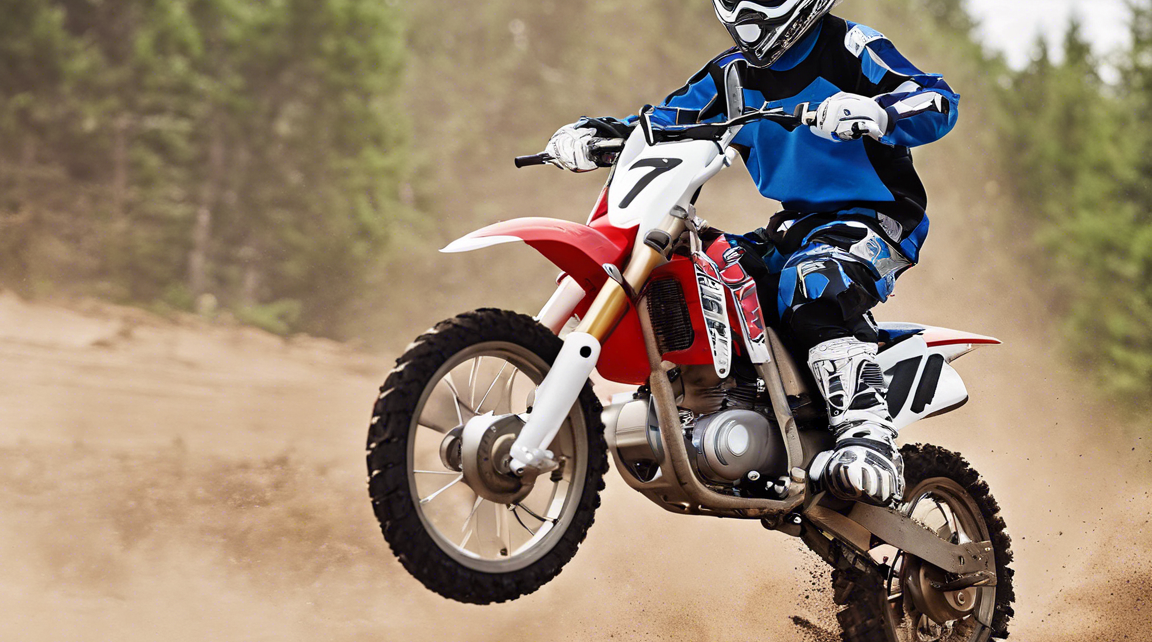Teenagers often yearn for adventure, thrill, and independence, which is why dirt biking has become a popular choice among this age group. Whether it’s the love for off-road adrenaline rushes or the desire to explore new terrains, teens find dirt biking to be an exhilarating and rewarding hobby. However, before diving headfirst into the world of dirt biking, it’s crucial for teens and their parents to understand the ins and outs of this sport.
In this comprehensive guide, we’ll delve into everything teens need to know about dirt bikes, from choosing the right bike to safety gear and maintenance tips. Whether you’re a beginner looking to get started or a seasoned rider aiming to hone your skills, this guide is your ultimate resource for all things related to dirt biking.
Choosing the Right Dirt Bike
1. Types of Dirt Bikes
When it comes to dirt bikes, there are several types to choose from, each designed for specific terrains and riding styles. The most common types of dirt bikes include:
- Trail Bikes: Suitable for beginners and recreational riders, trail bikes are versatile and easy to handle.
- Motocross Bikes: Designed for racing on motocross tracks, these bikes feature powerful engines and enhanced suspension systems.
- Enduro Bikes: Built for endurance races and off-road trails, enduro bikes are equipped with lights and are street-legal.
- Dual-Sport Bikes: Ideal for riders who want a blend of on-road and off-road capabilities, dual-sport bikes are versatile and can be ridden on various terrains.
2. Considerations for Teens
When selecting a dirt bike for a teenager, it’s important to consider the following factors:
- Size and Weight: Choose a bike that is appropriate for the teen’s size and level of experience. A bike that is too heavy or powerful can be difficult to control.
- Engine Size: Opt for a bike with an engine size that matches the teen’s skill level. Beginner riders should start with smaller engine sizes and gradually progress to more powerful bikes.
- Electric vs. Gas-Powered: Electric dirt bikes are quieter and require less maintenance, making them a great option for beginners. Gas-powered bikes, on the other hand, offer more power and a traditional riding experience.
3. Popular Dirt Bike Brands
Some of the top dirt bike brands known for their quality and performance include:
- Honda: Renowned for its reliability and durability, Honda offers a wide range of dirt bikes for riders of all skill levels.
- Kawasaki: Known for its powerful engines and innovative technology, Kawasaki’s dirt bikes are popular among riders.
- Yamaha: With a reputation for producing versatile and high-performance bikes, Yamaha is a favorite choice for many riders.
- KTM: Specializing in off-road motorcycles, KTM bikes are designed for performance and durability.
Safety Gear and Accessories
1. Helmet
A helmet is the most critical piece of safety gear for any dirt biking activity. When selecting a helmet for a teen rider, ensure it fits snugly, provides adequate ventilation, and meets safety standards such as DOT or Snell certification.
2. Protective Gear
In addition to a helmet, teens should wear the following protective gear to ensure their safety while dirt biking:
- Goggles: Protect the eyes from dirt, debris, and UV rays.
- Gloves: Provide grip and protect the hands in case of a fall.
- Boots: Offer ankle support and protect the feet from impact injuries.
- Chest Protector: Guards the chest and back from impacts and roost.
3. Riding Gear
Comfortable and durable riding gear can enhance the overall dirt biking experience for teens. Consider investing in jerseys, pants, body armor, and knee braces to ensure comfort and protection during rides.
Riding Techniques and Skills Development
1. Body Position
Proper body positioning is crucial for maintaining control and balance while riding a dirt bike. Encourage teens to stand up on the footpegs, keep their elbows up, and distribute their weight evenly to navigate through rough terrain effectively.
2. Braking and Throttle Control
Teach teens the importance of braking gradually and using both the front and rear brakes to avoid skidding. Additionally, mastering throttle control is key to managing speed and traction on different surfaces.
3. Cornering Techniques
Cornering effectively is a skill that requires practice and precision. Teach teens to look ahead, lean the bike into the turn, and modulate the throttle to maintain traction and control through corners.
4. Jumping and Landing
For teens interested in tackling jumps and obstacles, proper jumping and landing techniques are essential. Encourage them to approach jumps at the correct speed, keep a neutral body position in the air, and land with bent knees to absorb the impact smoothly.
Maintenance Tips and Checklist
1. Regular Inspections
Ensure that the dirt bike undergoes regular maintenance checks to identify any issues or wear and tear. Inspect the tires, brakes, chain, sprockets, and suspension components periodically for optimal performance.
2. Oil Changes
Follow the manufacturer’s guidelines for oil changes and use high-quality oil suited for the bike’s engine. Regular oil changes are essential for maintaining engine performance and longevity.
3. Air Filter Maintenance
Clean or replace the air filter as recommended to prevent dirt and debris from entering the engine. A clogged air filter can lead to reduced performance and potential engine damage.
4. Chain and Sprocket Care
Keep the chain properly lubricated and tensioned to ensure smooth power transmission. Inspect the sprockets for wear and replace them if necessary to maintain optimal performance.
5. Suspension Setup
Adjust the suspension settings based on the teen rider’s weight, riding style, and terrain preference. Proper suspension setup enhances ride comfort, traction, and handling performance.
Frequently Asked Questions (FAQs)
1. What age is suitable for teens to start dirt biking?
Teens can start dirt biking as early as 12 years old, depending on their physical development and maturity level.
2. Do teens need a license to ride a dirt bike?
In most cases, teens riding on private property or designated off-road trails do not require a license. However, riding on public roads or tracks may necessitate a license or permit.
3. How can teens stay safe while dirt biking?
Teens can stay safe by wearing proper safety gear, following riding guidelines, practicing good judgment, and undergoing training or lessons to enhance their skills.
4. Is dirt biking an expensive hobby for teens?
While dirt biking can be expensive due to the cost of bikes, gear, maintenance, and accessories, there are budget-friendly options available for teens starting in the sport.
5. Are there youth dirt biking competitions available for teens?
Yes, there are various youth dirt biking competitions and races organized at local, regional, and national levels for teens to showcase their skills and compete against peers.
In conclusion, dirt biking offers teens a thrilling and engaging outdoor activity that promotes physical fitness, skill development, and a sense of adventure. By understanding the essentials of choosing the right bike, adhering to safety practices, honing riding techniques, and maintaining the bike properly, teens can enjoy a fulfilling dirt biking experience. Remember, safety should always be the top priority, and continuous learning and practice are key to becoming a skilled and responsible dirt bike rider.



